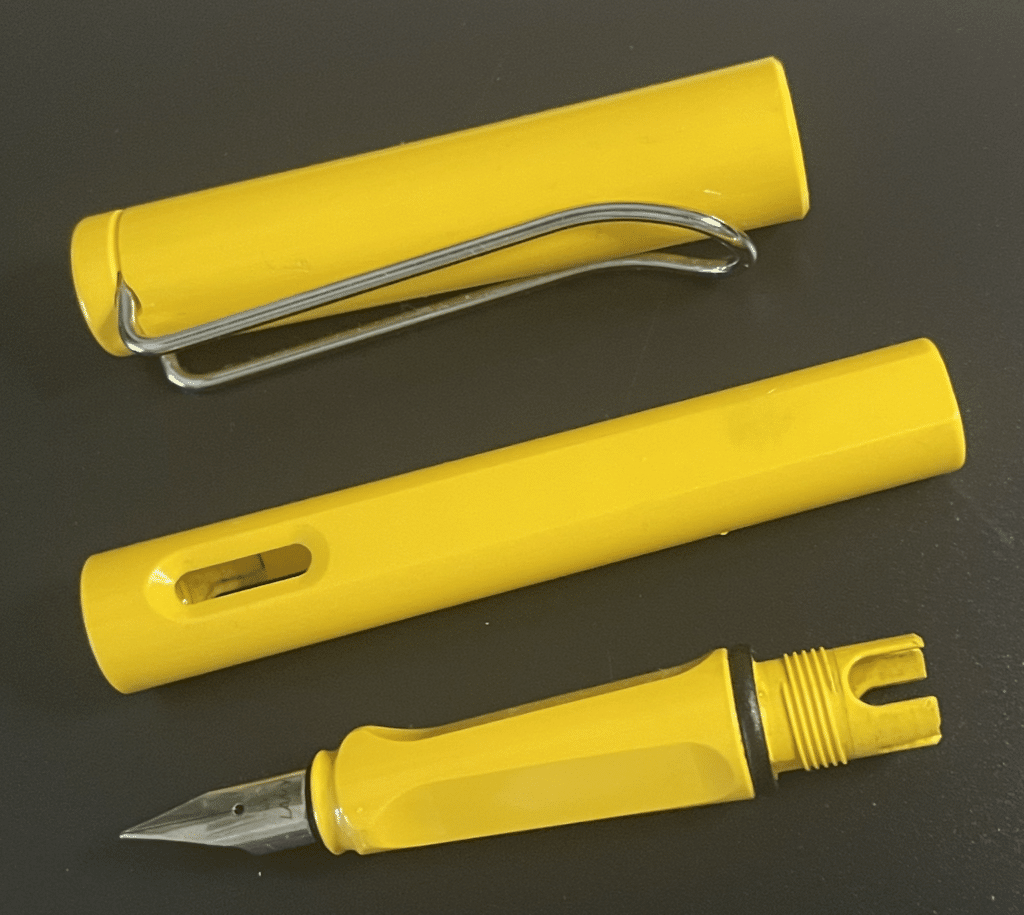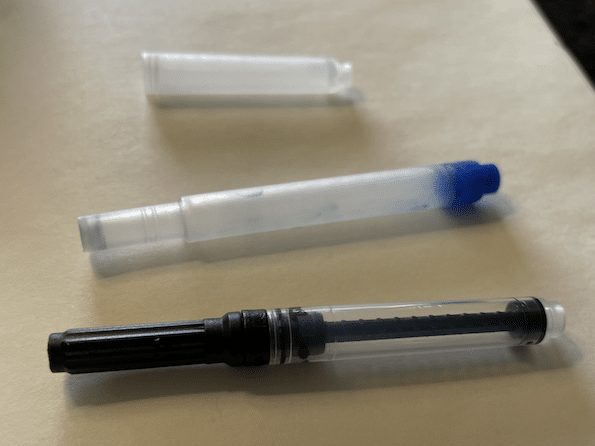Have you ever wondered who invented the fountain pen and how it came to be? The answer to this question is not as straightforward as you might think. Over the centuries, various inventors and innovators contributed to the development of the fountain pen as we know it today.
In this article, we will explore the early history, pioneers, evolution, and golden age of this wondrous writing tool.
The Early History of Writing Instruments
Writing has been an essential human activity since the dawn of civilization. The earliest evidence of writing dates back to approximately 5,000 years ago when the Sumerians used a wedge-shaped stylus to make impressions on clay tablets. It is fascinating to note that the Sumerian writing system, known as cuneiform, was one of the earliest forms of written communication in the world. The cuneiform script was used for various purposes, including record-keeping, trade, and literature.
Over time, different cultures developed various writing instruments, such as reed pens, quills, and dip pens. The Egyptians, for instance, used reed pens made from the stem of a plant called papyrus. The stem was cut at an angle and then split into a nib to create a writing tool. The Greeks and Romans used quills made from the feathers of birds such as geese, swans, and crows. These quills were sharpened to a point and then dipped in ink to write.
From Quills to Dip Pens
The most prevalent writing tool of the Middle Ages and the Renaissance was the quill pen, made from the feather of a goose or other large bird. Quill pens had to be sharpened frequently and dipped in ink, making writing a slow and messy process. However, they were still the most popular writing tool for several centuries. The quill pen was used to write some of the most important documents in history, including the Magna Carta and the Declaration of Independence.
In the early 19th century, the dip pen with a steel nib and a wooden or ivory handle became popular. The dip pen was a significant improvement over the quill pen because it was more durable and easier to use. The user had to dip the nib in ink frequently, which often led to blotting and smudging of the paper. However, the dip pen was still not very portable, required frequent refilling of ink, and tended to leak or spill, ruining clothes and documents.
The Need for a More Convenient Writing Tool
The search for a more convenient and reliable writing tool led to the invention of the fountain pen. The fountain pen was first patented by Petrache Poenaru in 1827, but it was not until the 1880s that fountain pens became popular. The fountain pen had an ink reservoir that allowed the user to write for a more extended period without refilling. The ink flowed through a feed to the nib, making writing smoother and more consistent.

Today, writing instruments have come a long way from the early days of the Sumerians. We have a wide range of writing tools to choose from, including ballpoint pens, rollerball pens, gel pens, and fountain pens. Each writing instrument has its unique features and benefits, making it suitable for different writing styles and preferences.
The Pioneers of Fountain Pen Invention
The fountain pen has been an essential tool for writers and artists for centuries. Its invention has an exciting and complex history, with several innovators contributing to its development. Let’s explore the stories of three of the most influential pioneers.
Petrache Poenaru and the First Fountain Pen Patent
Petrache Poenaru was a Romanian scholar who received the first patent for a fountain pen in 1827. His design was a significant improvement over the quill pen, which required constant dipping in ink. Poenaru’s fountain pen incorporated a barrel made of a swan feather, which served as the ink reservoir, and a silver nib. However, his invention did not gain much popularity due to its impracticality and the high cost of production. Despite this, Poenaru’s contribution to the development of the fountain pen cannot be understated.
It is interesting to note that Poenaru was not only an inventor but also a mathematician, physicist, and linguist. He was a man of many talents who made significant contributions to several fields of study.
John Jacob Parker and the Self-Filling Fountain Pen
John Jacob Parker was an American inventor who received a patent for the first self-filling fountain pen in 1884. His design featured a collapsible rubber sac that could be filled with ink by pressing a lever on the side of the pen. Parker’s invention was a significant improvement over Poenaru’s design, as it eliminated the need for constant dipping in ink. It became popular among writers and business people and was widely used for several decades.
It is interesting to note that Parker was not only an inventor but also a successful businessman. He founded the Parker Pen Company, which became one of the most prominent pen manufacturers in the world.
John Jacob Waterman and the Leak-Proof Pen
John Jacob Waterman was another American inventor who revolutionized the fountain pen industry. He received a patent for a leak-proof fountain pen in 1884, which featured a new type of feed mechanism that controlled the flow of ink from the reservoir to the nib. Waterman’s innovation eliminated the problem of leakage, which had plagued fountain pens for years. His invention made fountain pens even more popular and helped establish them as a reliable writing tool.
It is interesting to note that Waterman was not only an inventor but also a successful businessman. He founded the Waterman Pen Company, which became one of the most prominent pen manufacturers in the world. Waterman’s company was known for its high-quality pens and innovative designs.
These three pioneers of fountain pen invention made significant contributions to the development of this essential writing tool. Their innovations and designs have stood the test of time and continue to influence the design of fountain pens today.
Download this cheatsheet and get expert solutions for the 13 most common pen problems.
Get The FREE CheatsheetThe Evolution of Fountain Pen Design
The popularity of fountain pens continued to grow, and designers and manufacturers came up with many new features and improvements. Let’s explore some of the most significant developments.
The Introduction of the Ink Cartridge
In 1934, the fountain pen industry was revolutionized once again by the introduction of the ink cartridge. László Bíró, a Hungarian journalist, invented a pen that used a tiny, replaceable ink cartridge instead of a built-in reservoir. This innovation made fountain pens even more convenient and portable.

With the introduction of the ink cartridge, fountain pen enthusiasts no longer had to carry around bottles of ink or worry about spills and leaks. The ink cartridge made it possible to write on the go, without the need for a desk or a steady hand. This development made fountain pens more accessible to a broader range of people, including students, businesspeople, and travelers.
The Development of Nib Materials and Styles
The nib is the most critical part of a fountain pen, as it determines the quality of the writing experience. In the 20th century, manufacturers experimented with different materials for nibs, such as gold, stainless steel, and iridium. They also developed various styles of nibs, such as oblique, stub, and flex, to cater to different writing preferences.
Gold nibs, in particular, became a mark of luxury and prestige in the fountain pen world. They were prized for their smoothness, flexibility, and durability. Stainless steel nibs, on the other hand, were more affordable and durable, making them a popular choice for everyday use. Iridium-tipped nibs were also developed, which combined the durability of steel with the smoothness of gold.
The Impact of Industrialization on Fountain Pen Production
The 20th century was a time of mass production and automation, and the fountain pen industry was not immune to these changes. Manufacturers used new technologies such as injection molding and assembly-line production to make pens faster and cheaper. However, this led to a decline in quality and a loss of craftsmanship.
Despite the benefits of mass production, many fountain pen enthusiasts still prefer the quality and craftsmanship of vintage pens. These pens were often made by skilled artisans who took pride in their work and used high-quality materials. Vintage pens can be found in antique shops and online marketplaces, and many collectors enjoy restoring them to their former glory.The Golden Age of Fountain Pens
Despite the competition from ballpoint pens and other writing instruments, fountain pens enjoyed a golden age from the 1920s to the 1950s. Let’s explore some of the highlights of this era.
Iconic Brands and Models
Many iconic fountain pen brands and models were introduced during this era, such as the Parker Duofold, the Sheaffer Balance, and the Montblanc Meisterstück. These pens were known for their elegant designs, superior craftsmanship, and outstanding writing performance.
The Role of Fountain Pens in Art and Literature
Fountain pens were not just writing tools; they were also symbols of creativity and imagination. Many famous artists and writers, such as Pablo Picasso and Ernest Hemingway, used fountain pens to create their masterpieces. Fountain pens were also popular gifts for graduations, weddings, and other milestones.
The Decline of Fountain Pens in the Face of Ballpoint Pens
The popularity of fountain pens began to decline in the 1960s with the introduction of ballpoint pens. Ballpoint pens were cheaper, easier to use, and more convenient than fountain pens. They did not require inkwells or frequent refilling and could write on any surface. However, fountain pens retained a loyal following among collectors, enthusiasts, and connoisseurs.
The End of the Story
The fountain pen may no longer be the most popular writing tool, but its legacy lives on. Its invention and evolution mirror the advances and setbacks of human civilization. It reminds us of the power of innovation, creativity, and craftsmanship. So next time you write with a fountain pen, take a moment to appreciate its history and the people who made it possible.
Liz
Hey, I'm Liz. I'm the founder of this thing. Pen-obsessed and a notebook nut, I love writing by hand. So I'm gonna talk about it on a computer.Download this cheatsheet and get expert solutions for the 13 most common pen problems.
Get The FREE Cheatsheet